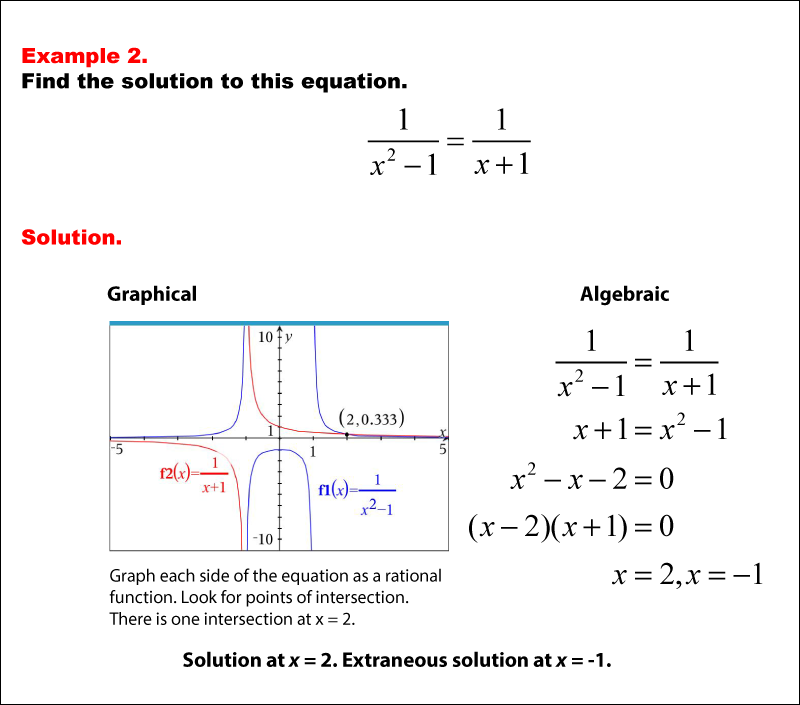
Display Title
Math Example--Solving Equations--Extraneous Or No Solutions--Example 2
Display Title
Extraneous Or No Solutions--Example 2

Topic
Equations
Description
This example presents a more complex equation involving rational expressions, which are prone to producing extraneous solutions. Solving such equations typically involves algebraic manipulation to isolate the rational terms, then multiplying by a common factor. These operations can inadvertently introduce extraneous solutions. The solution might involve cross-multiplication, squaring both sides, or a combination of these techniques. After simplification, the resulting equation is likely to be of higher degree, possibly quadratic or higher, requiring factoring or the quadratic formula to solve. The critical step in this example would be the verification of solutions. Each solution obtained must be carefully checked by substituting it back into the original equation. This process often reveals that some algebraically correct solutions fail to satisfy the original equation due to domain restrictions or the introduction of extraneous solutions during the solving process.
For a complete collection of math examples related to Solving Equations with Extraneous or No Solutions click on this link: Math Examples: Solving Equations with Extraneous or No Solutions Collection.
| Common Core Standards | CCSS.MATH.CONTENT.HSA.REI.A.2 |
|---|---|
| Grade Range | 9 - 12 |
| Curriculum Nodes |
Algebra • Radical Expressions and Functions • Radical Functions and Equations • Rational Expressions and Functions • Rational Functions and Equations |
| Copyright Year | 2020 |
| Keywords | extraneous solutions |